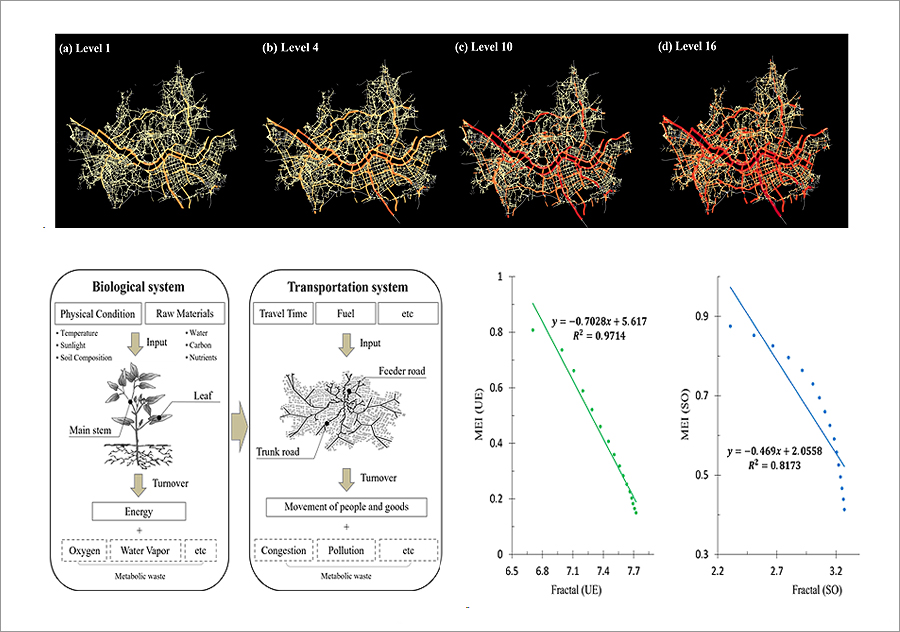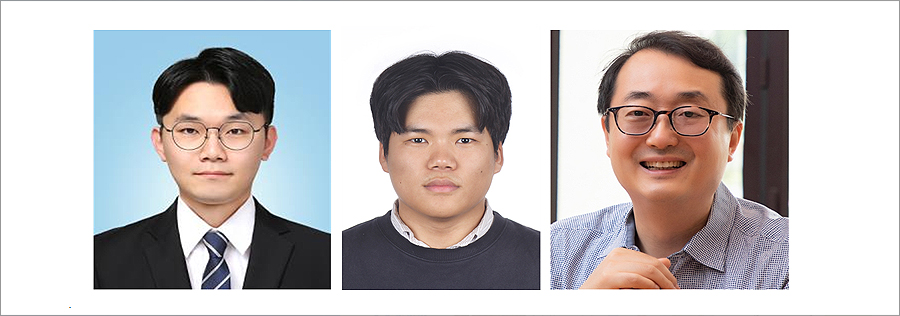Professor Lee Seung-jae's team seeks clues to solve the road congestion problem in Seoul
- Investigating the Metabolic Dynamics of Transportation System through Fractal Dimension Analysis
A research team led by Professor Lee Seung-jae of the Department of Transportation Engineering of University of Seoul (President Won Yong-gul) has presented a new way to analyze the metabolic efficiency of the transportation system through fractal-dimensional analysis. The results of the study were published on Aug. 19, 2024, in the international renowned journal Transportmetrica A: Transport Science, which is listed in SSCI.
The study analyzed the changes that occur when there are more vehicles on the roads in Seoul, and the researchers observed changes in the fractal dimension as traffic in the Seoul road system becomes congested and connected them with metabolic indicators to shed light on the efficiency of the transportation system. Here, the metabolic index refers to the efficiency of the use of resources based on the metabolic principle of living organisms and is defined as the actual utilization ratio of resources to resources put into the transportation system.

(Top) Traffic Growth Patterns in Seoul Road System
(Bottom right) Metabolism of living things and transportation systems
(Bottom left) Relationship between fractal dimension and metabolic indicators
As a result of the study, the road system in Seoul begins to show a certain pattern when the number of vehicles increases. This pattern is expressed as the "fractal dimension," which means that the higher the figure, the more complicated the traffic flow becomes. The fractal dimension of Seoul's roads was measured between 6.7 and 7.7, and the metabolic indicators, which indicate traffic efficiency, showed a simple straight line relationship. The researchers explained that this relationship holds only when the driver freely chooses the route, which is essentially similar to the "Zipf's law," which occurs when a city naturally grows without external intervention.

▲ Professor Lee Seung-jae's team in the Department of Transportation Engineering in University of Seoul (from left to right, researcher Kim Si-on, researcher Jeong Il-ho, and professor Lee Seung-jae)
Researcher Kim Si-on of the Department of Transportation Engineering participated in the study as the first author, Professor Lee Seung-jae was the corresponding author, and researcher Jeong Il-ho, who is dispatched to the Transport Studies Unit (TSU) of Oxford University, were also co-authors.
"The transportation system is a complex system that is difficult to predict due to the interaction of various factors," Professor Lee Seung-jae said. "Complex system theories such as fractal theory can provide important insights for a deep understanding of these transportation systems."







